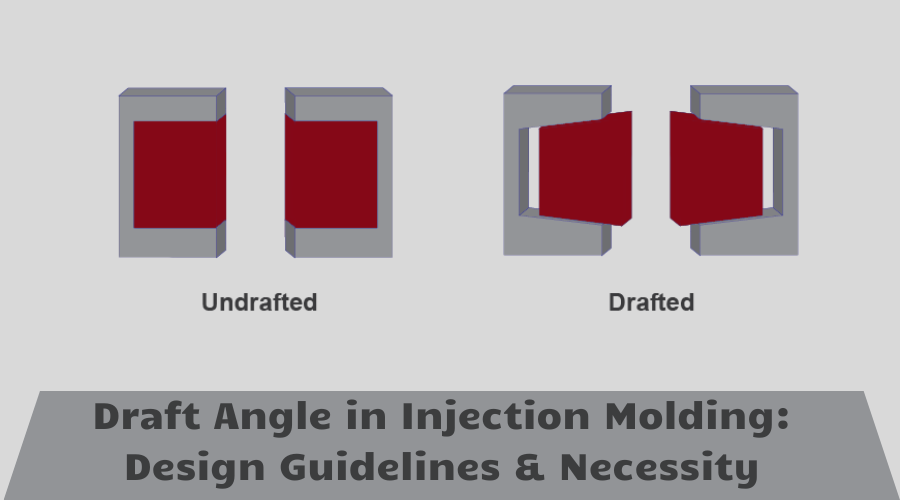In the world of injection molding, precision is paramount. Every detail, every angle, and every curve in the design can significantly impact the final product’s quality and manufacturability. Among the crucial considerations in injection molding design is the draft angle- an often overlooked yet indispensable aspect that can make or break the success of a project. In this article, we delve into the significance of draft angles in injection molding, offering comprehensive guidelines for their implementation and explaining why they are a necessity for achieving optimal results.

Understanding Draft Angle
Draft angle, also known as taper or draft, refers to the degree of slope or angle incorporated into the vertical walls of a molded part. In simpler terms, it is the angle by which the mold is tapered to allow for easy ejection of the part from the mold cavity. This slight inclination facilitates the removal of the finished product from the mold without causing damage or distortion.
Importance of Draft Angle
The incorporation of draft angles serves several critical purposes in injection molding:
1. Facilitates Ejection: One of the primary functions of draft angles is to enable smooth ejection of the molded part from the mold cavity. Without adequate draft, the part may stick to the mold, leading to production delays, damage to the mold or the part itself, and increased manufacturing costs.
2. Reduces Friction: Draft angles help minimize friction between the mold and the part during ejection, preventing surface imperfections, scratches, or scuff marks that could compromise the part’s aesthetic appeal and functionality.
3. Prevents Defects: Insufficient draft angles can result in molding defects such as drag marks, warping, or deformation, particularly in parts with deep recesses or complex geometries. Proper draft ensures uniform cooling and prevents the formation of undercuts that hinder part removal.
4. Enhances Mold Life: By reducing the force required for ejection and minimizing wear and tear on the mold, draft angles contribute to prolonging the lifespan of the mold, thereby optimizing the overall efficiency and cost-effectiveness of the injection molding process.
Design Guidelines for Draft Angles
While the specific draft angle requirements may vary depending on factors such as material properties, part geometry, and surface finish requirements, the following guidelines offer a general framework for incorporating draft angels into injection molding designs:
1. Minimum Draft Angle: A draft angle of 1 to 2 degrees is typically considered the minimum requirement for most injection molding applications. However, deeper drafts may necessary for larger or more complex parts.
2. Uniformity: Maintain consistent draft angles across all vertical walls of the part to ensure uniform ejection and prevent uneven shrinkage or distortion.
3. Part Geometry: Consider the geometry of the part, particularly features such as ribs, bosses, and recesses, when determining the appropriate draft angle. Sharp corners or undercuts may require additional draft to facilitate ejection.
4. Material Selection: Certain materials, such as rigid plastics or those with high shrinkage rates, may necessitate greater draft angles to compensate for their tendency to adhere to the mold surface.
5. Surface Finish: The desired surface finish of the molded part may influence the choice of draft angle. Smoother finishes generally require less draft to achieve optimal ejection without marring the surface.
Conclusion
In the intricate realm of injection molding, draft angles stand as a fundamental yet often underestimated element in achieving manufacturing success. From ensuring seamless part ejection to mitigating defects and prolonging mold life, draft angles play a multifaceted role in optimizing the injection molding process. By adhering to the design guidelines outlined herein and recognizing the necessity of draft angles in injection molding ,designers and manufacturers can pave the way for the creation of high-quality, precision-engineered parts with efficiency and reliability.
-q4gvl4k29y4hq8j9rjpapvj0ft06fje63olt7p210i.png)


